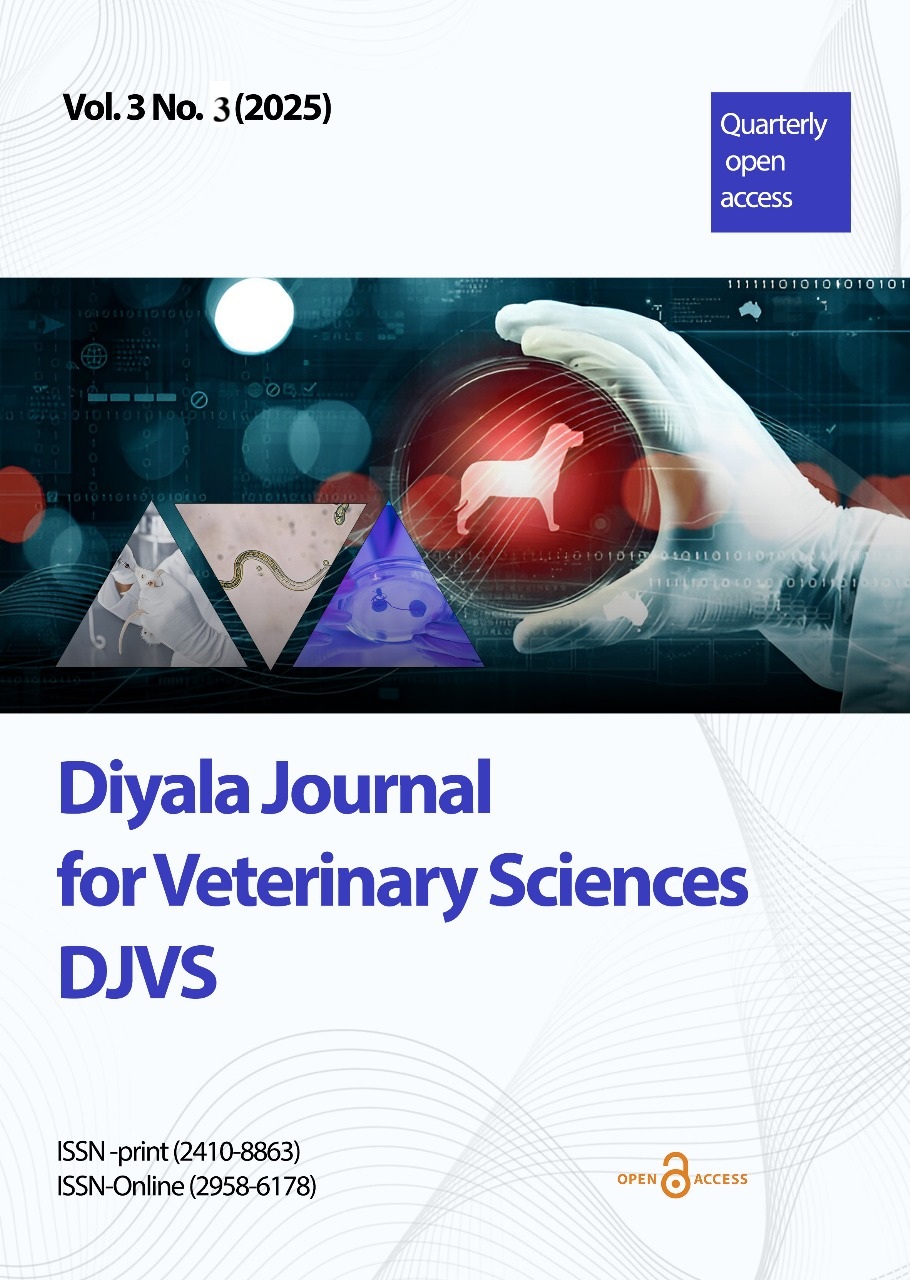Clinical and Histopathological Diagnosis of Acquired Visceral Melanosis (Black Liver) in Lambs from Garmian region, Kurdistan/Iraq
Black Liver in Garmian
DOI:
https://doi.org/10.71375/djvs.2025.03307Keywords:
Black pigment, melano-macrophages, carcasses, kupffer cells, hepatocytesAbstract
Background: During routine post-mortem examination at the Kalar slaughterhouse in the Garmian region, Iraq, black pigmentation was observed in the livers of lambs aged 6–7 months, with occasional discoloration in the lungs, kidneys, and hearts. The affected animals showed no clinical signs prior to slaughter. Aims: This study aimed to investigate the histopathological characteristics of the observed lesions. Results: Tissue samples were collected and fixed in 10% neutral-buffered formalin then processed using standard histological techniques and examined microscopically. Histopathological analysis revealed a complete loss of hepatic architecture, congested central veins, coagulative necrosis, and pigment-laden Kupffer cells. Melano-macrophages and discrete pigment granules were also noted around portal areas. Conclusions: The findings were consistent with acquired visceral melanosis (AVM), also known as “black liver.” This condition, though previously reported in other countries, is recorded here for the first time in Iraq. The etiology remains unclear, although environmentaland nutritional factors are suspected. Further studies are required to determine the origin and potential implications for animal health and meat safety.
Downloads
Downloads
Published
How to Cite
Issue
Section
License
Copyright (c) 2025 Mohammed ALZandee

This work is licensed under a Creative Commons Attribution-NonCommercial 4.0 International License.



